Adi Hütter has brought a fresh tactical approach to AS Monaco, transforming the team’s playing style with his distinctive philosophy. Known for his intense, high-pressing football, Hütter has implemented strategies that blend defensive organization with quick, vertical attacking play. This tactical analysis dives into the key principles that define Monaco under Hütter, exploring how his dynamic system influences both the team’s structure and individual roles on the pitch. Through careful attention to pressing patterns, transitions, and fluid formations, Hütter’s Monaco aims to be a force in Ligue 1.
Build-up
Low Build-up
In the low build-up, Hütter usually sets his team up in a 1-4-2-4 formation.
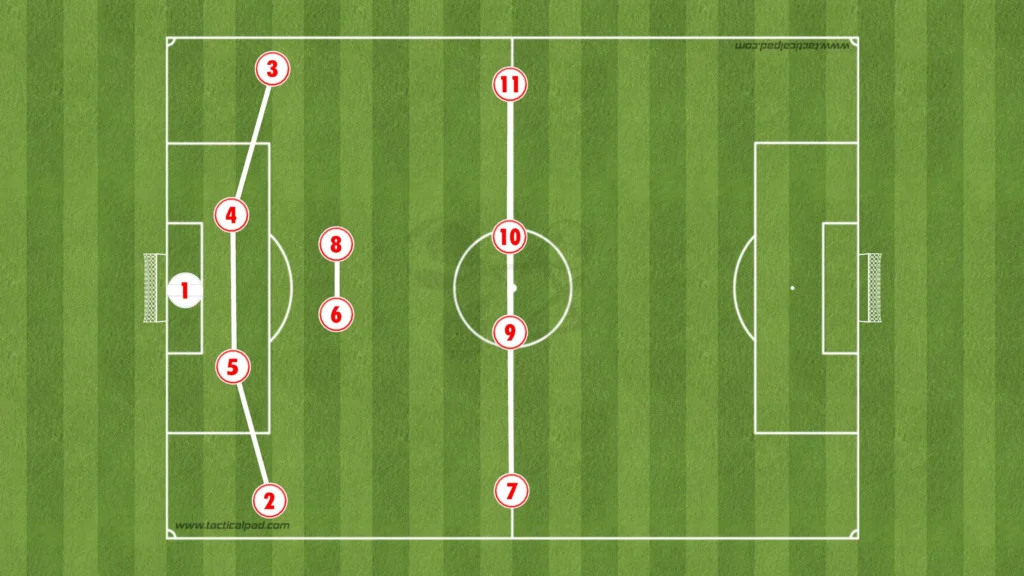
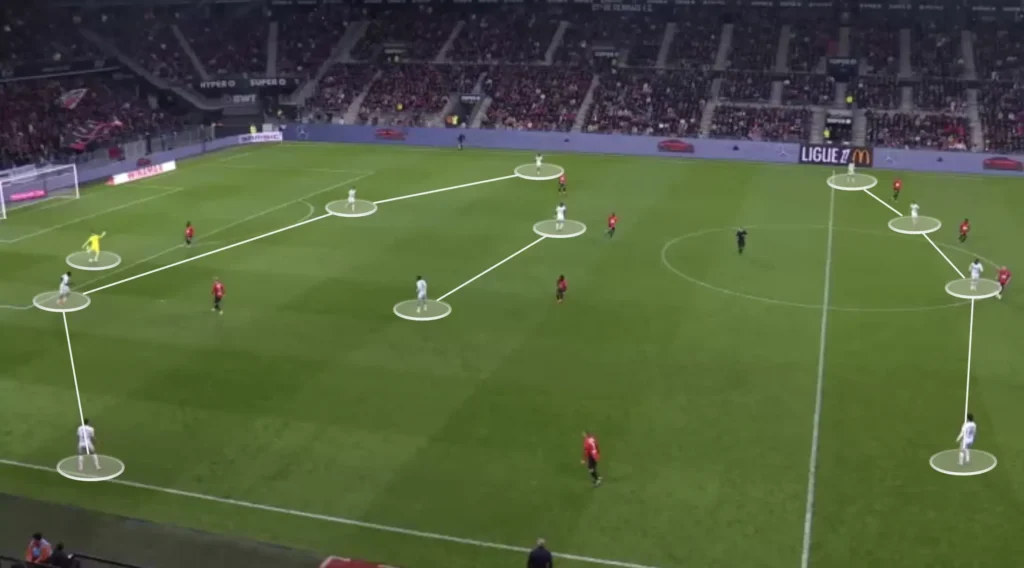
The wingers usually start wide and come into attacking midfield positions when the play starts.
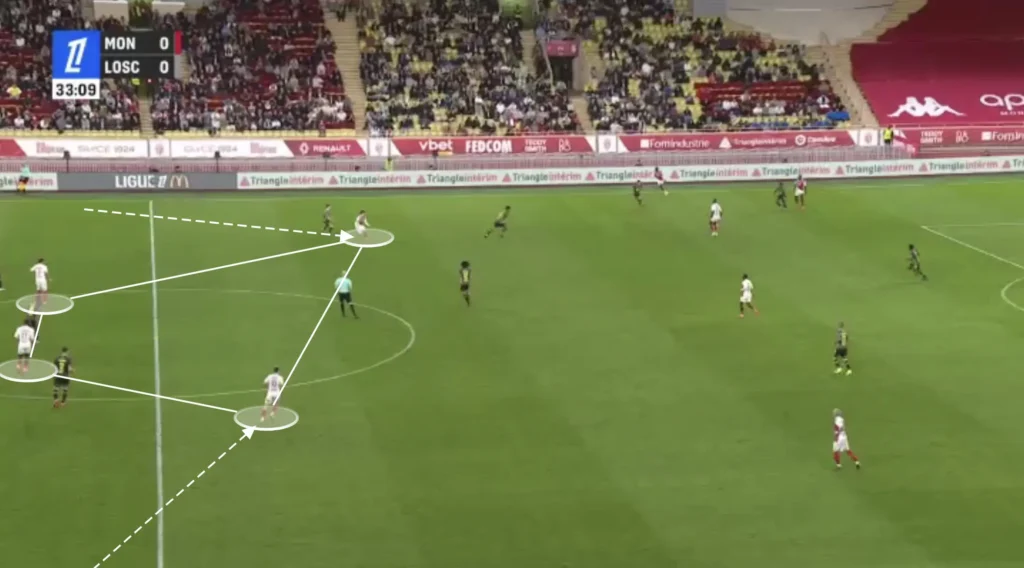
This often gives Monaco a numerical superiority in the midfield, which will help them beat the opposition’s press. The wingers also have better conditions to win the second balls when they are in the middle. When the goalkeeper plays a long ball toward the strikers, the wingers will work together to win the second ball, which allows Monaco to establish possession higher up the pitch.
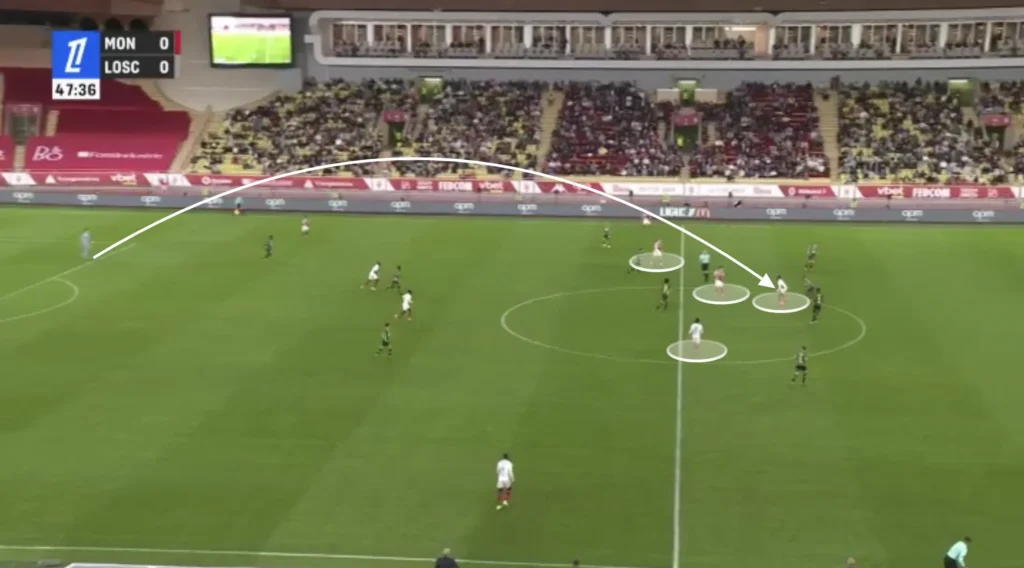
Monaco have also used the 1-4-2-3-1 formation in the low build-up, still inverting the wingers into the middle.
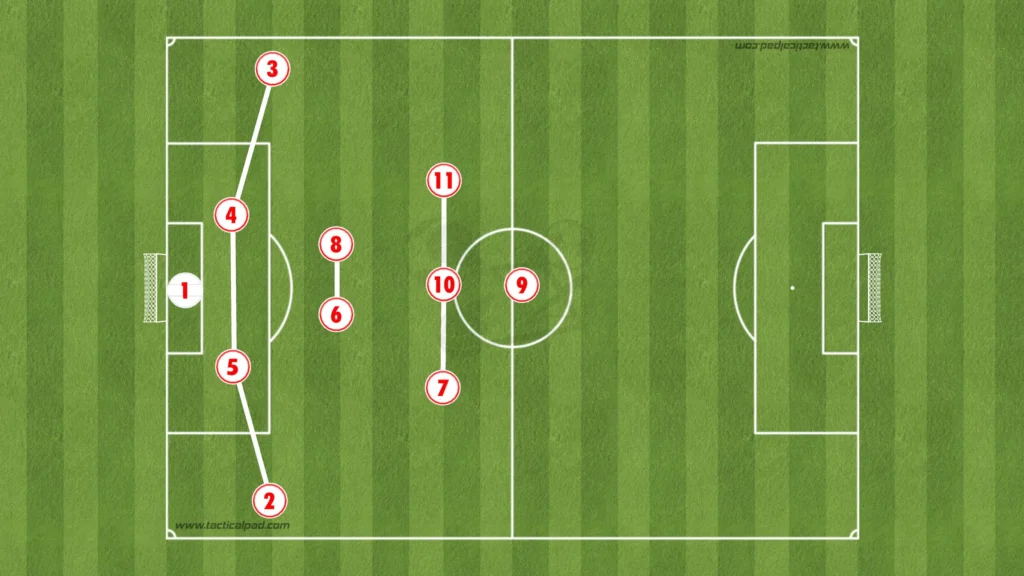
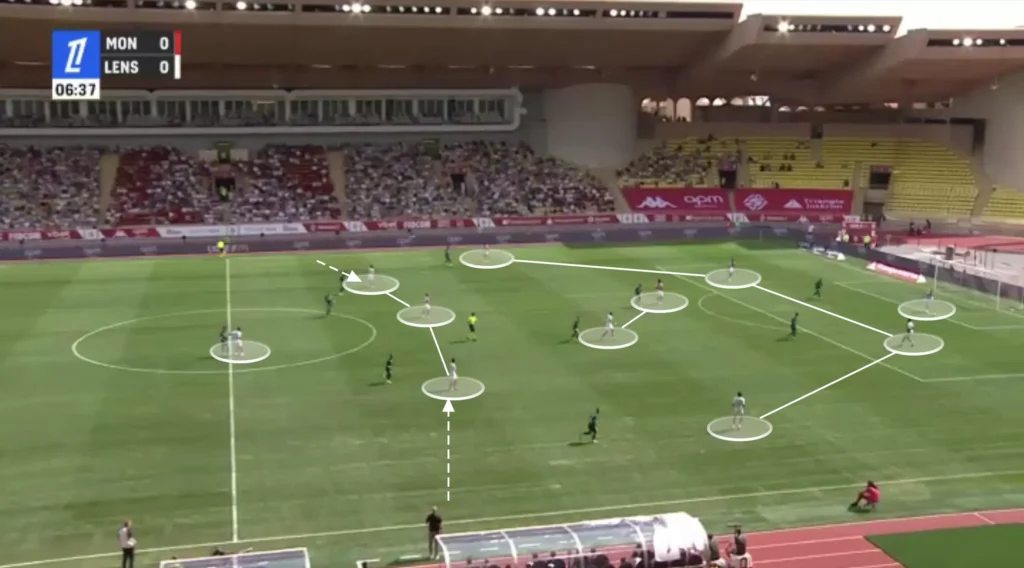
High Build-up
In the high build-up, Hütter’s Monaco usually uses the 1-4-2-3-1 formation.
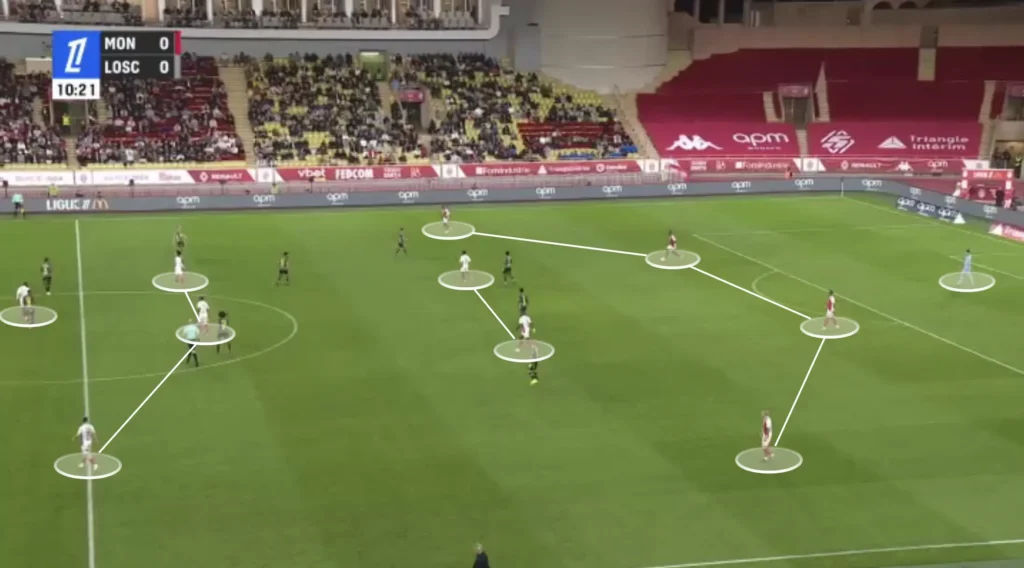

In Monaco’s 1-4-2-3-1 attacking system, the wingers invert into the middle, meaning the fullbacks play a crucial role in providing width and supporting the attack by pushing up the field. When the wingers drift into central spaces, Monaco’s fullbacks move higher up the flanks to occupy the vacated wide areas, giving the team multiple options in attack. This positioning allows the fullbacks to either support the midfield with additional passing outlets or to exploit open channels for overlapping runs. By doing so, they draw defenders out of position, opening up space for the inverted wingers or central midfielders to make forward runs. This tactical choice keeps Monaco’s attack unpredictable, constantly shifting defensive focus and providing better angles for quick transitions and crosses into the box.
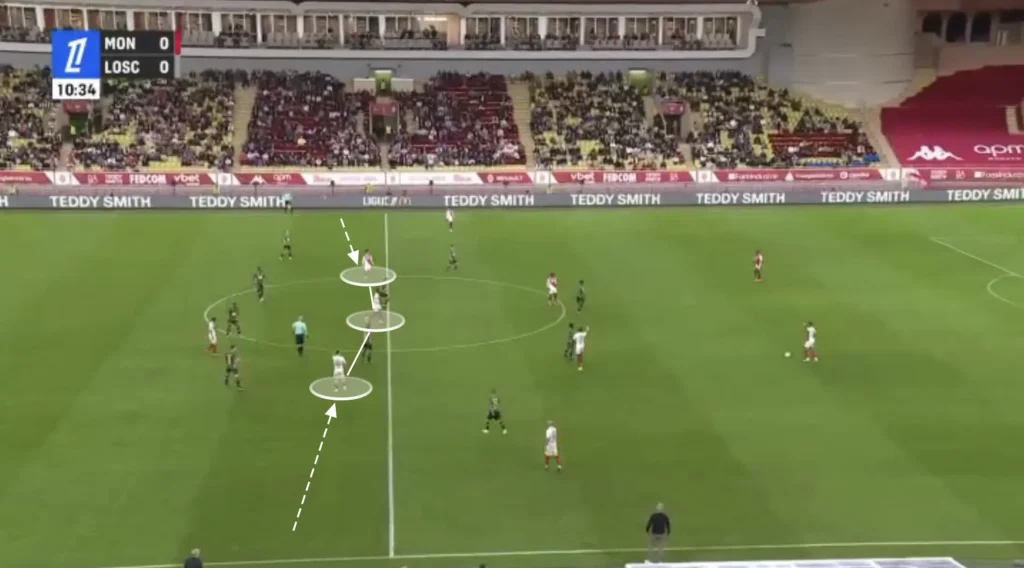
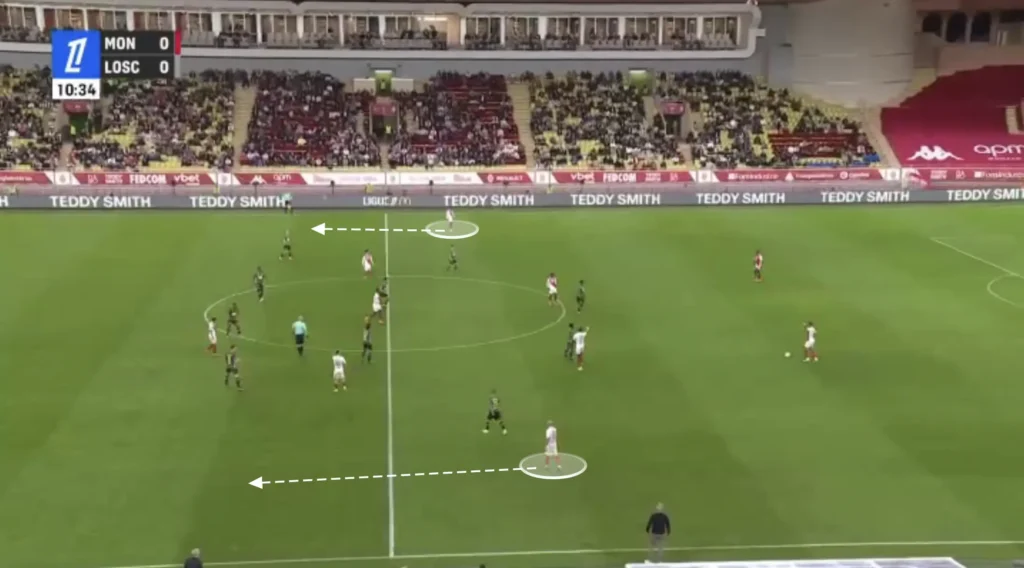
With the fullbacks pushing up, Monaco will be in a 1-2-2-5-1 formation with many players high up the pitch.
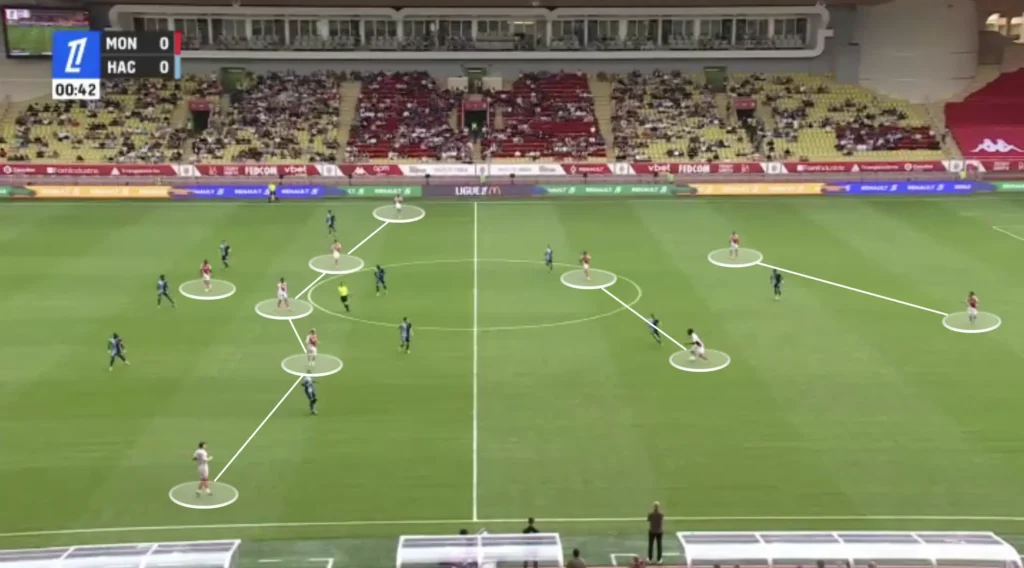
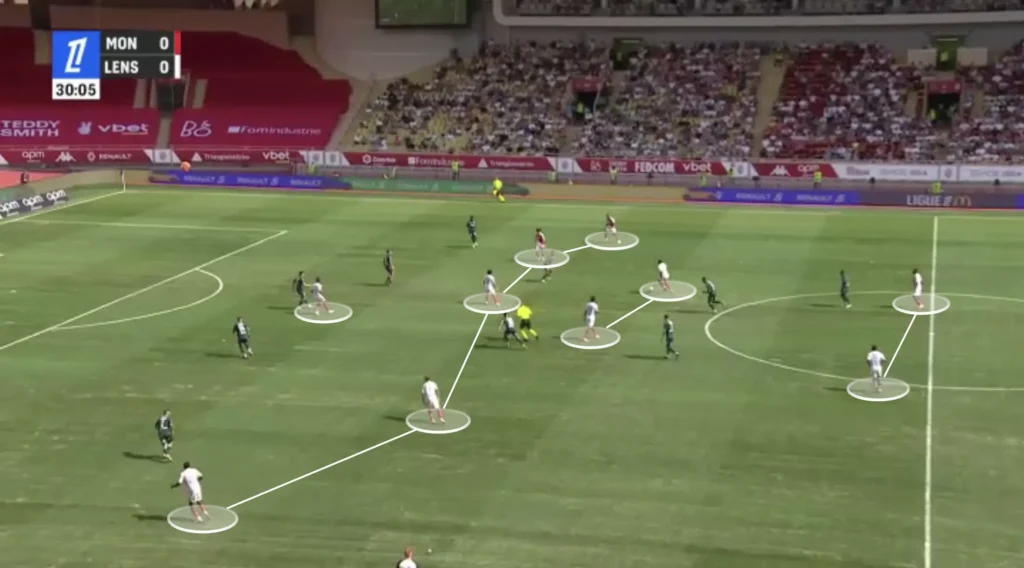
Adi Hütter has also used different formations than the 1-4-2-3-1 in the build-up. They have, for example, often used a 1-4-2-2-2 formation, still maintaining the same principles and style of play.
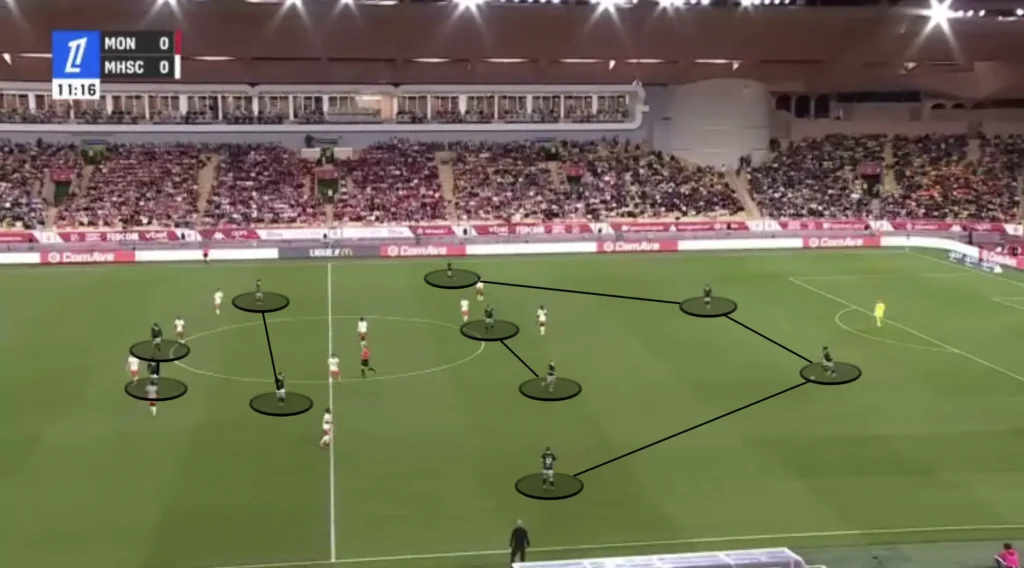
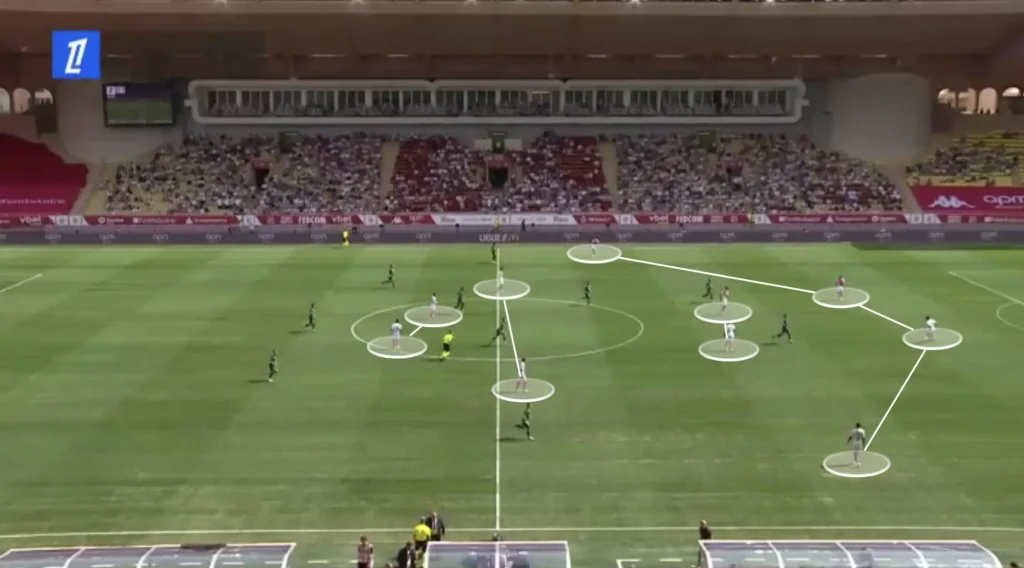
Rotations and Fluidity
The Monaco players constantly rotate during the build-up. The team adopts a dynamic approach, shifting between formations to create numerical advantages and exploit spaces. Hütter’s focus is always to get the players into their best positions, where they can make the most out of their individual skills. He emphasizes versatility, with players interchanging positions seamlessly to maintain possession and disrupt the opposition’s defensive structure. This flexibility creates numerical superiorities in different areas, allowing Monaco to bypass the opposition’s press while maintaining control.
Hütter will, for example, often drop down an attacking midfielder/inverted winger next to the holding midfielders. This shift creates a 1-2-3-5 formation, giving Monaco fewer players high up the pitch but more control in possession.
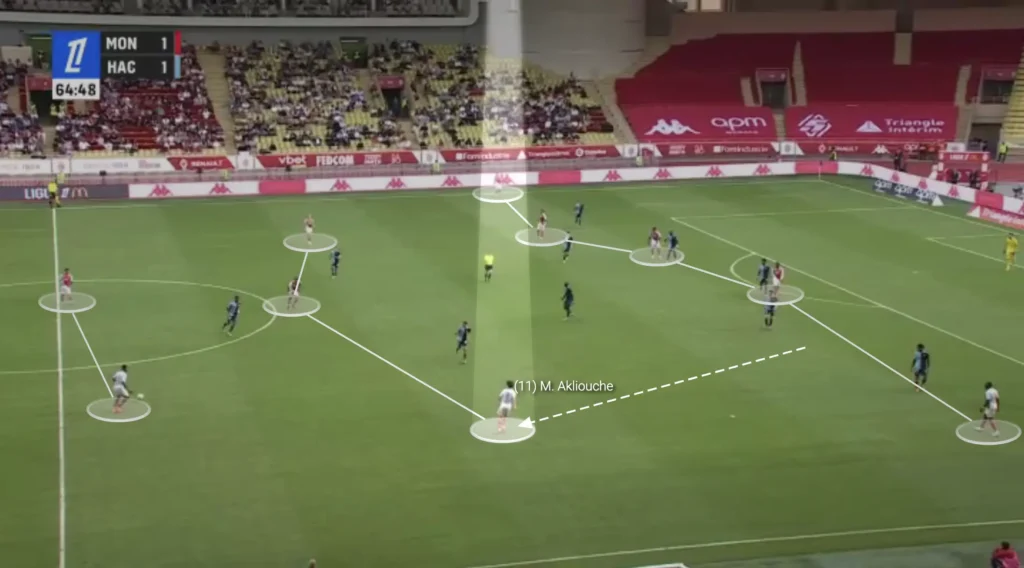
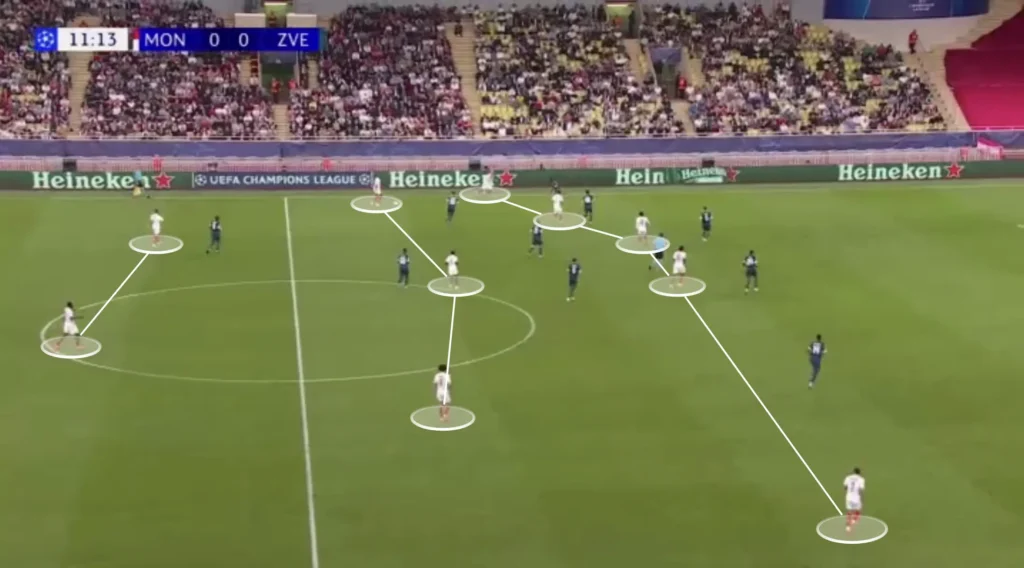
While it demands a lot of technical and tactical skills from the players, this fluidity has created new dynamics for Monaco’s attacking style, offering new solutions and ways of beating the opposition’s press. It enhances their ability to control the game while opening up opportunities for incisive passes and creative plays.
Numerical Advantages in the Middle
Regardless of the formation, Monaco will have many players in the center. Hütter usually has the fullbacks wide on each side and positions the remaining eight players in the middle.
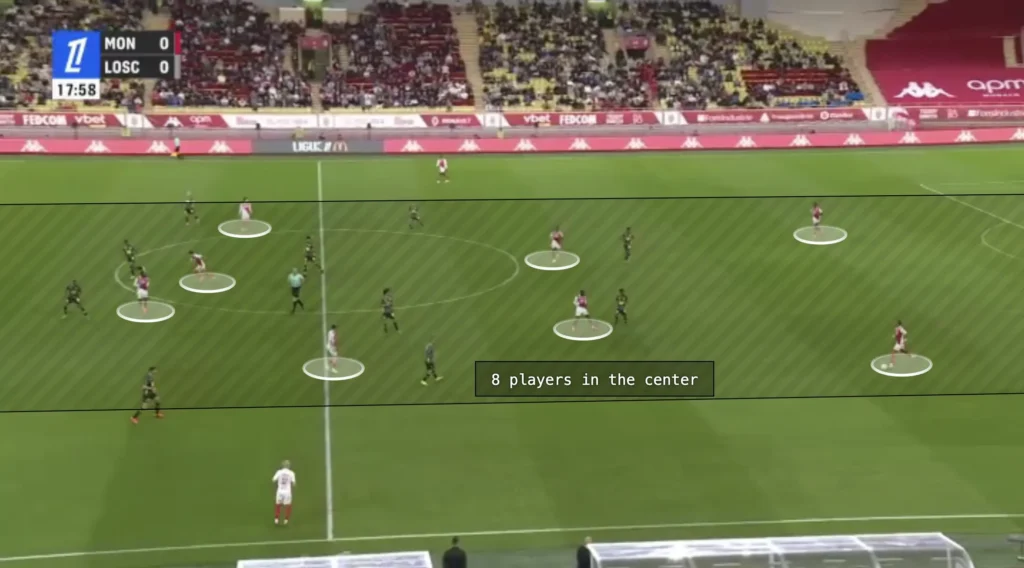
Having only the two fullbacks out wide and the rest of the players in the middle creates more options in the center and less space between the players. Hütter likes this because he prioritizes playing through the middle. He needs one player out wide to pull the opposition apart while the rest create numerical advantages in the midfield areas. When a team outnumbers the opposition in the midfield, it can more easily retain the ball, exploit spaces, and progress the ball through the center. Monaco will often progress the ball through quick central passes between the midfielders, beating the opposition’s press and exploiting gaps in the defense. At the same time, having many players centrally builds good conditions in defensive transitions since it allows more players to counterpress when they lose the ball.
Another purpose for keeping many players in the middle is to shorten the distance between them. This shortens the length of the passes, which naturally shortens the time between passes. This means the opposition players will have less time to push up and press, giving the Monaco players more time and control.
Rest-Defence
Hütter also wants many players close to the center to create a good rest-defence structure. Rest-defence in football refers to a team’s defensive organization and structure when they have possession of the ball, specifically aimed at being prepared to defend immediately if they lose it. A good rest-defence structure is crucial for maintaining balance and preventing counterattacks when the team is in possession.
Having many players in the middle and close to the ball gives Monaco a good rest-defence, since it allows more players to counterpress when Monaco lose the ball. When losing possession, the four or five Monaco players closest will immediately jump on the opposition player with the ball and close the distance to cut off any passing lanes. This approach disrupts the opponent’s transition from defense to attack, forcing errors and creating opportunities to regain control of the ball.
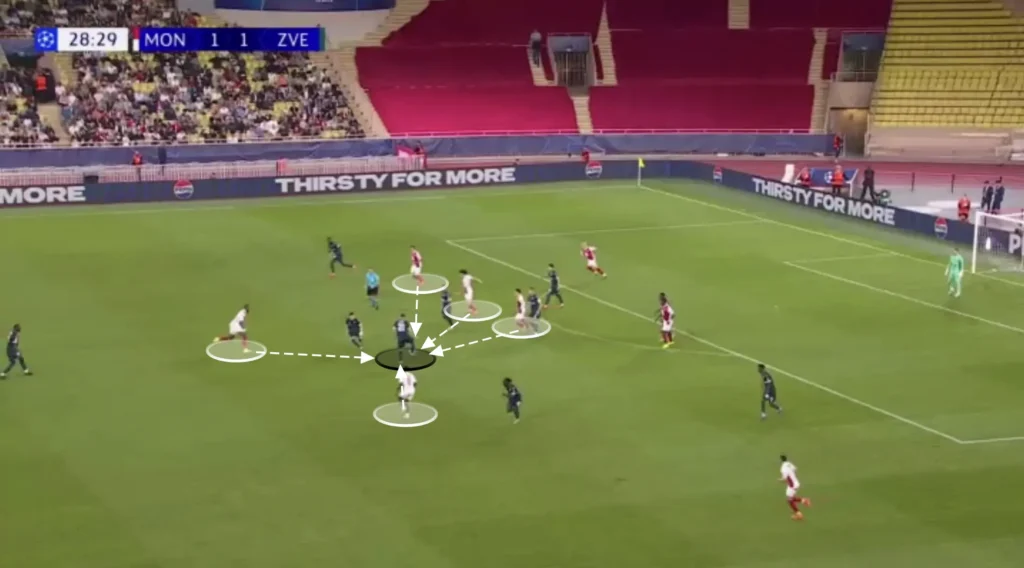
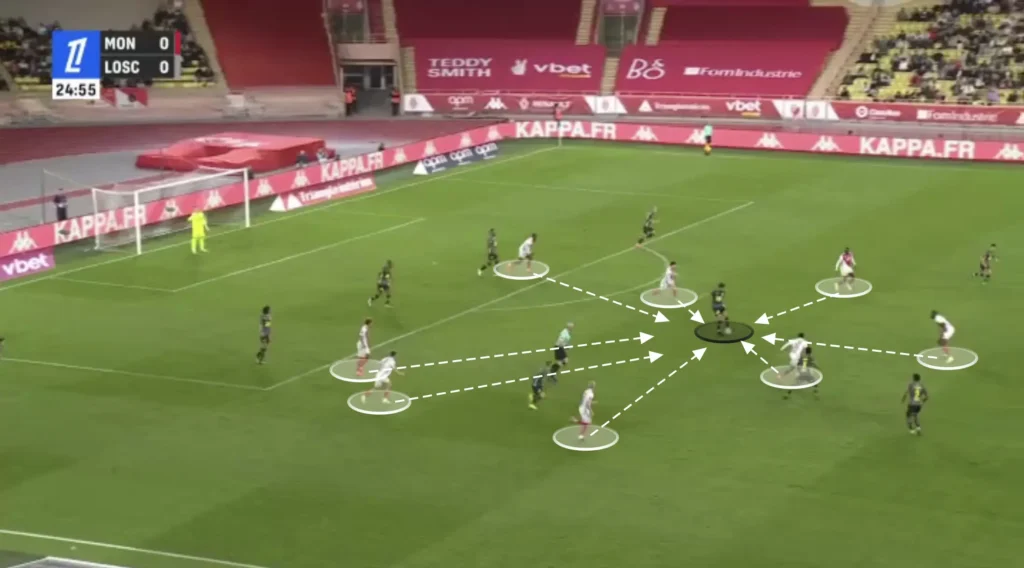
Counterpressing like this keeps Monaco on the front foot, allowing them to dominate possession and create more scoring opportunities. However, it requires exceptional fitness, tactical discipline, and teamwork.
Finding the Pockets
Hütter’s players always try to find the inverted wingers and number-ten in the pockets. These “pockets” refer to the spaces between the opposition’s defensive and midfield lines, where the number-ten and wingers can receive the ball in more advanced positions.
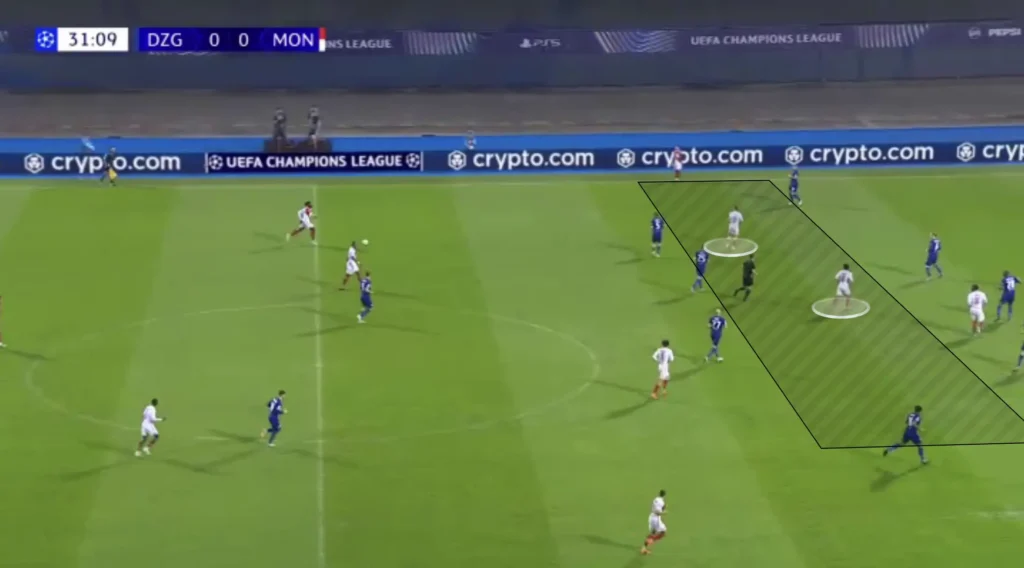
By positioning themselves intelligently in these pockets, the number-ten and wingers can turn quickly and face the opposition’s goal, creating opportunities for through balls, driving runs, or direct shots. This positioning forces the opposition to make difficult decisions. If an opposition defender steps up and closes down the Monaco player, he potentially leaves space behind. If he stays back, he allows the number-ten/winger time on the ball. The Monaco defenders and holding midfielders will look for straight passes, breaking the opposition lines and finding the number-ten or wingers who can turn and drive at the defense.
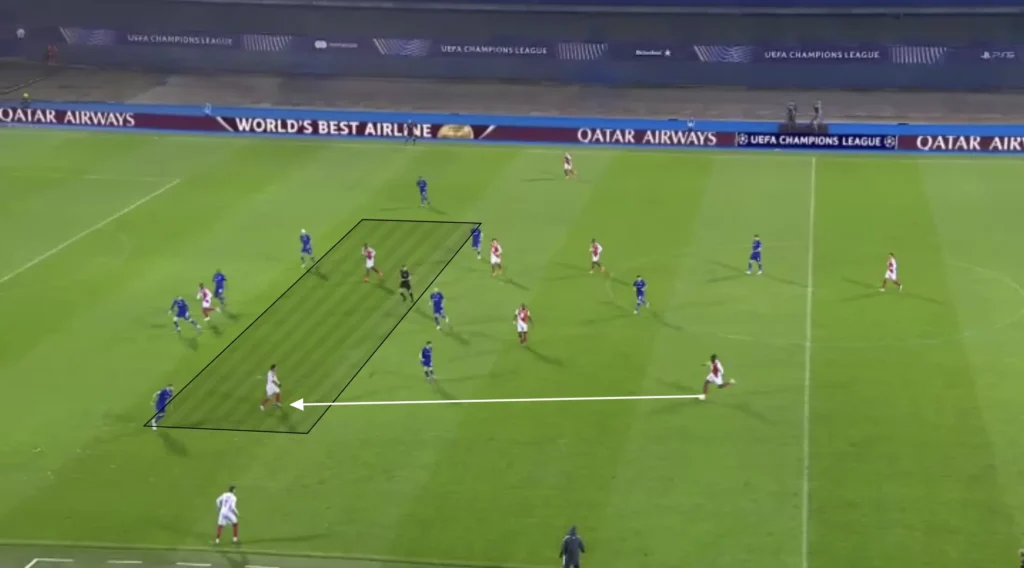
Additionally, the Monaco striker will be pinning the opposition center-backs, not allowing them to jump on the Monaco players between the lines. In football, “pinning” refers to the tactic of positioning a player in a way that occupies or “pins” an opposing defender, keeping them in place and limiting their movement or ability to support teammates.
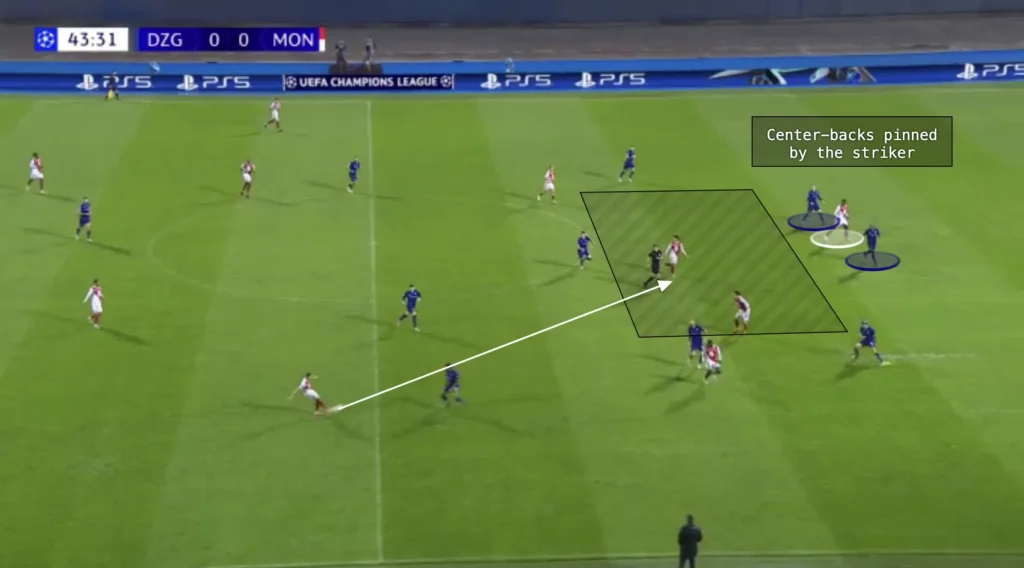
Finding these pockets is crucial for maintaining fluidity in attack and ensuring that the team can progress the ball effectively through the middle of the pitch.
Numerical Advantages Against the Opposition’s Defense
Monaco’s attacking structure often involves pushing multiple players high up the pitch, creating a numerical advantage against the opposition’s backline. By crowding the final third with attackers, Monaco can outnumber defenders, forcing them to cover more ground and make challenging decisions on marking. This overload not only increases their scoring chances but also gives them flexibility for players to make off-the-ball runs, further disrupting the opposition’s shape. Hütter’s tactic of committing numbers forward creates a constant pressure, making it difficult for opponents to regroup and defend effectively.
In this situation, three players are involved in the build-up, while seven are positioned high up in line with the opposition’s defense to create an overload there.
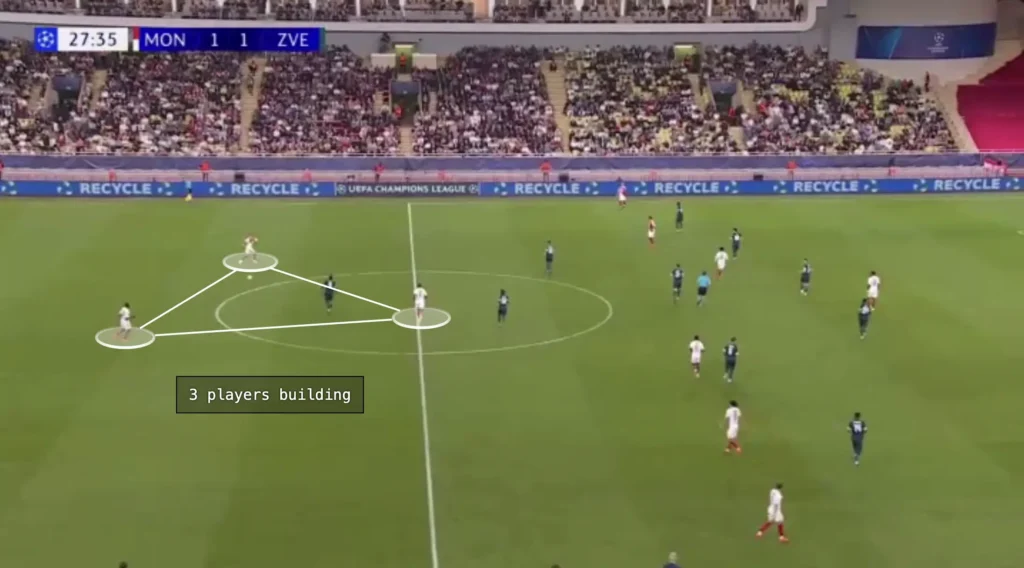
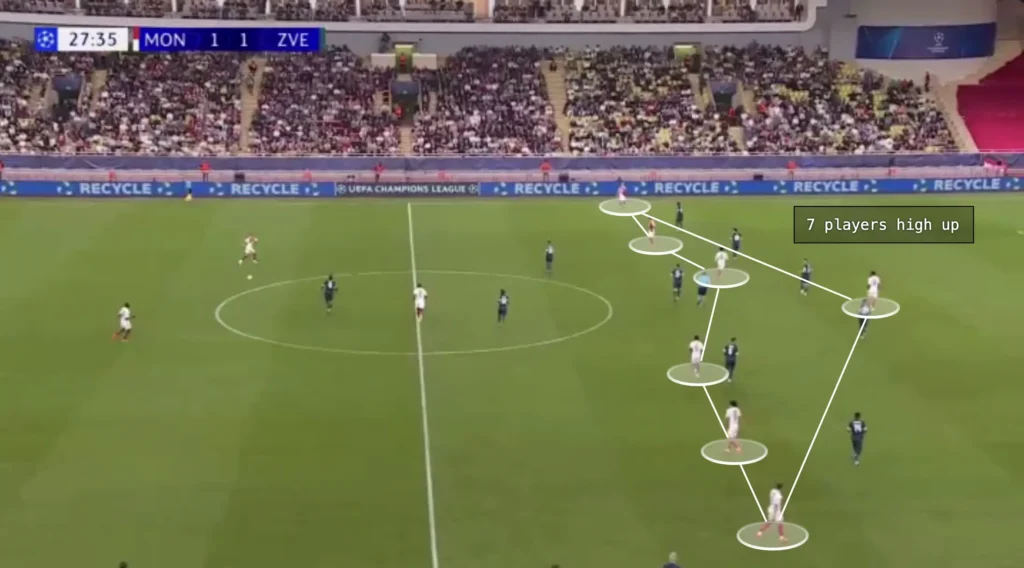
Hütter’s players mainly exploit this overload by creating 2v1 situations against the opposition fullback. When the defending team is positioned on one side, the weak-side fullback becomes vulnerable to the switch of play due to the 1v2 against Monaco’s inverted winger and attacking fullback. The defending fullback will often come in to control the winger, leaving space for the Monaco fullback out wide. Hütter’s team often capitalizes on this by getting the ball to the fullback and creating many opportunities from 2v1 situations on the wing and in the half-spaces.
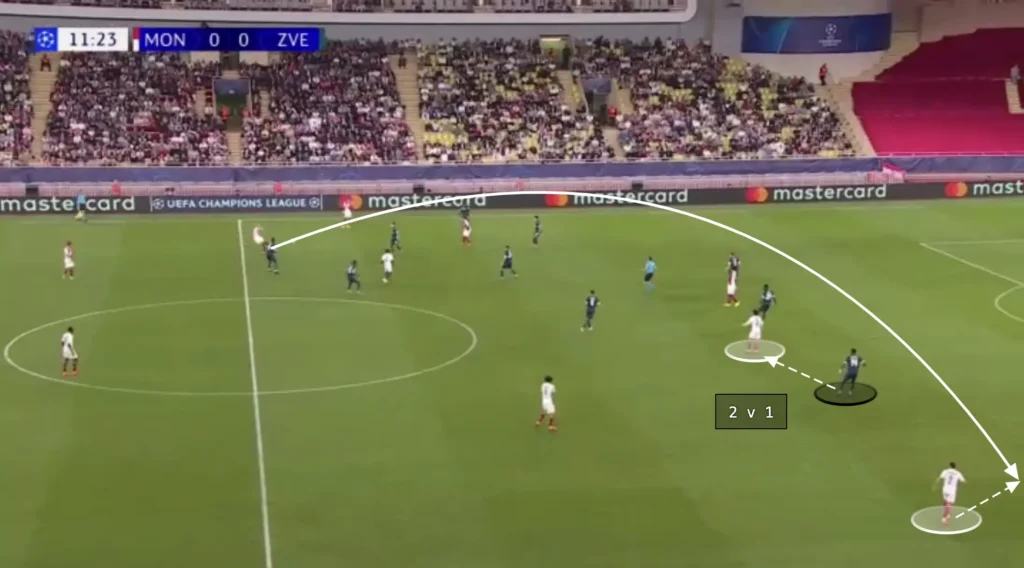
Final Third
Attacking the Half-Space
Hütter’s players usually look to create chances by attacking the space between the opposition center-back and fullback. They primarily do this from the wide areas with underlaps from the inverted wingers/attacking midfielders. When the Monaco fullback receives the ball out wide, he will attract the opposition fullback. This opens the space between the opposition fullback and center-back, which allows Monaco’s inverted winger/attacking midfielder to make the underlapping run into this space. The ball can be played to the underlapping player, who can cross the ball into the box or attack his defender in a 1v1 situation.
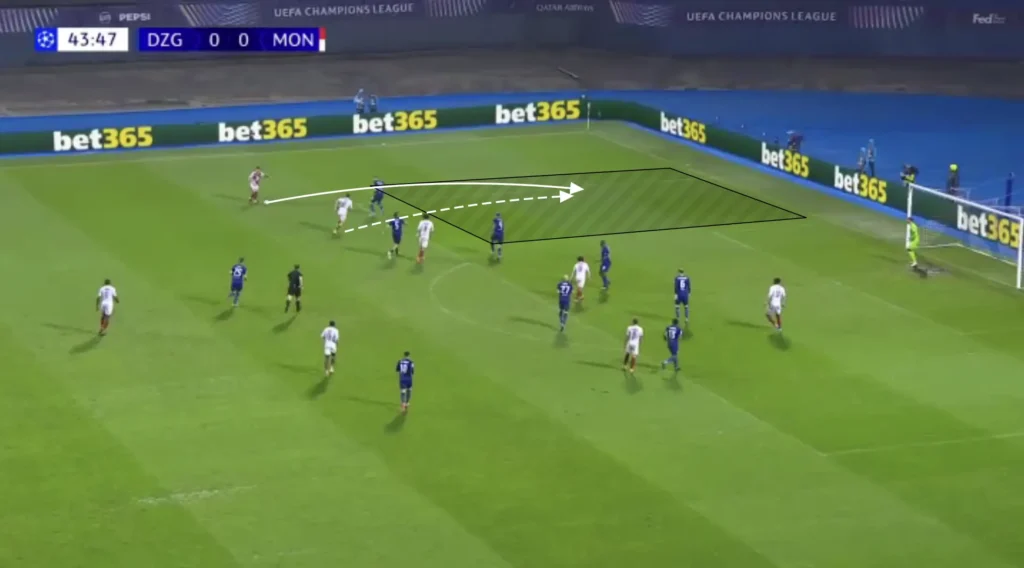
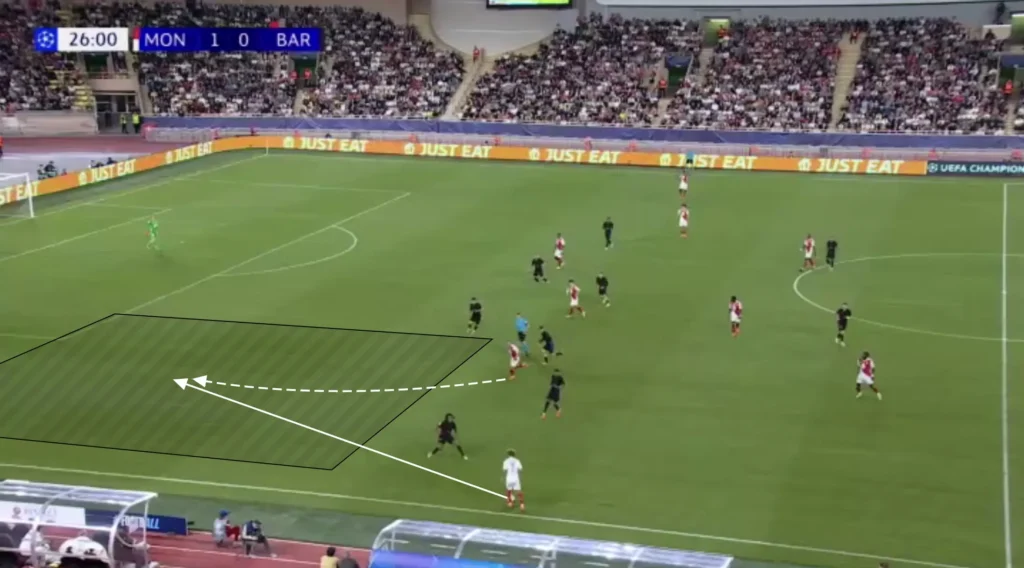
The fullback does not have to play the ball to the underlapping player. The run from the winger/attacking midfielder will often drag away an opposition defensive midfielder, which opens the space inside. The fullback can take the ball inside and shoot or find a pass to a free player in front of the backline.
Monaco will also exploit this gap between the opposition fullback and center-back with well-timed, deep runs from central midfielders. These incisive movements add an extra layer to Monaco’s offense, making it harder for defenses to stay organized.
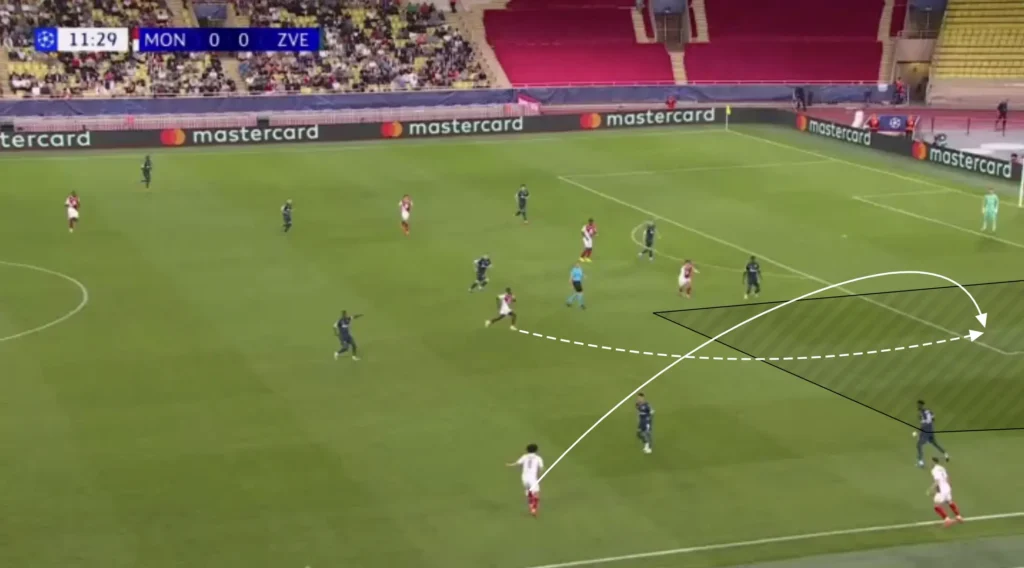
Many Players in the Box
The Monaco wingers, midfielders, and sometimes fullbacks look to make runs into the box when the ball is in the final third, often getting four or five players into these areas to create overloads. The numerical advantages in the box increase the chances of connecting with the cross, as more players present multiple targets for the crosser, making it harder for defenders to mark everyone effectively. Additionally, having multiple players in the box provides options for different types of finishes, whether it’s a header, volley, or a quick tap-in. It also allows for better positioning to react to second balls or rebounds, increasing the likelihood of capitalizing on any defensive errors.
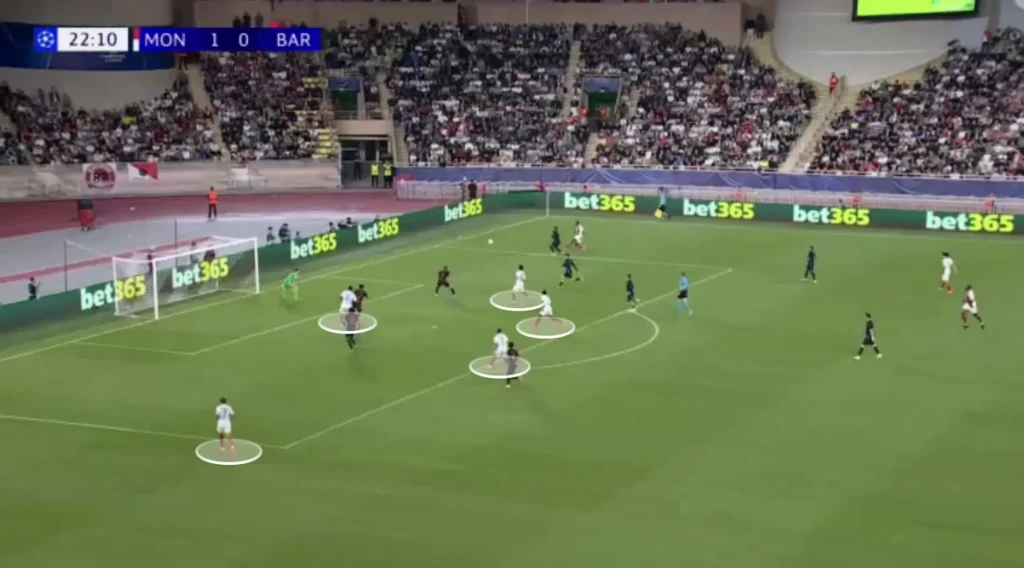
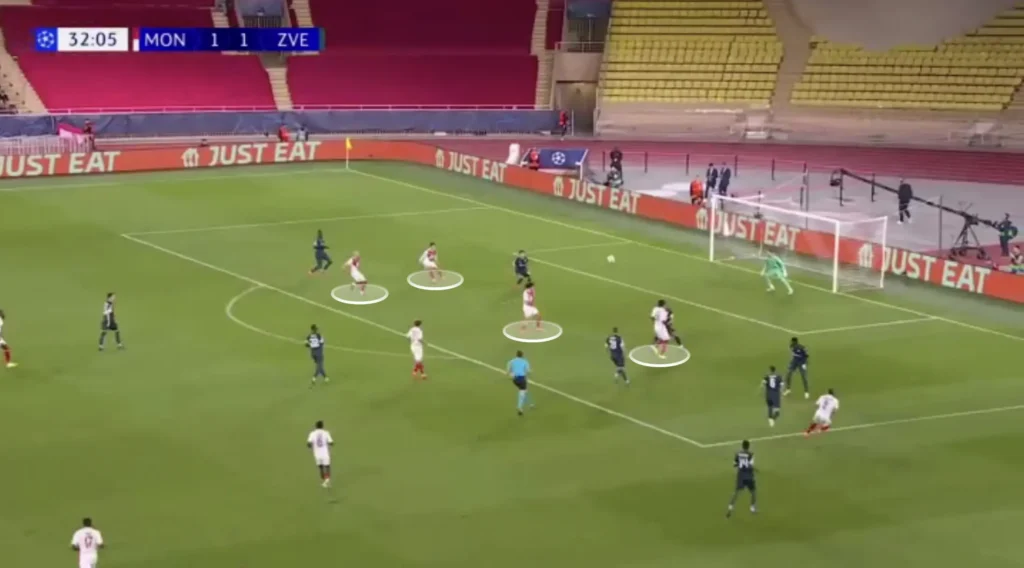
In Monaco’s attacking system, the attacking fullbacks score many goals from crosses at the back post. The opposition fullback will often be preoccupied with a Monaco attacker, which leaves massive space at the back post for the fullback to attack. The fullback can be found directly or indirectly if no one else connects with the cross.
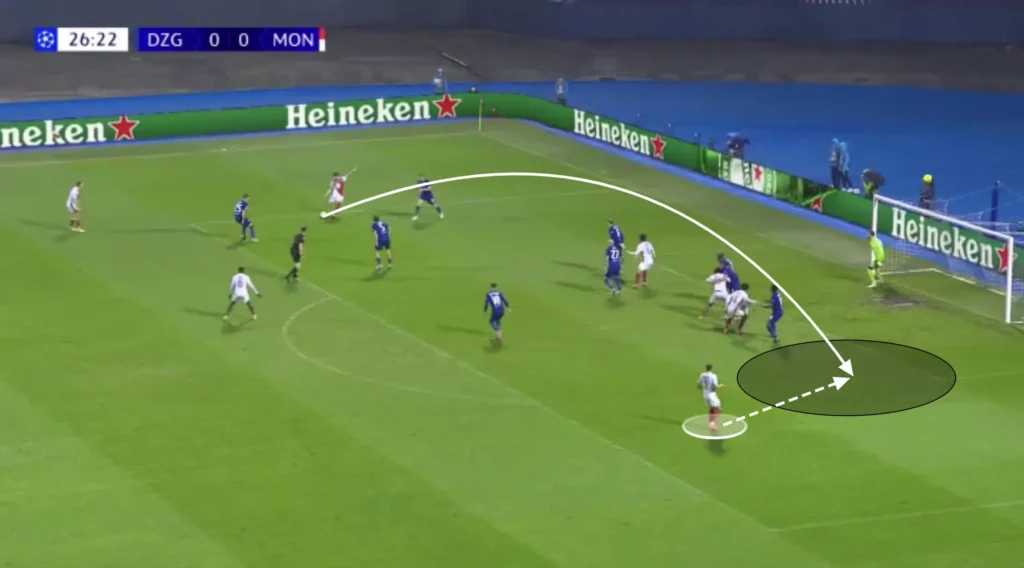
Hütter also positions many players outside the box, ready for the second balls and cut-backs. Monaco will often create crossing opportunities, which pushes down the opposition’s defense and opens the space in front of the opposition’s backline. The holding midfielders can collect any loose balls or be found directly in these spaces with cut-backs, and from there, they can shoot or combine with an attacker to create goalscoring opportunities.
Defending
High Press
Monaco’s high-intensity, man-to-man pressing style under Adi Hütter has become a defining feature of their approach. This press begins immediately as the opposition attempts to build out from the back, with each Monaco player tracking their assigned opponent across the pitch. Rather than simply cutting off passing lanes, Monaco’s players close down their counterparts aggressively, aiming to regain possession quickly and high up the field. This relentless man-marking forces the opposition into rushed decisions, often leading to errors or long balls that Monaco’s defenders can intercept. By suffocating space and time on the ball, Monaco disrupts the opponent’s rhythm and frequently creates opportunities to counter-attack directly after winning back possession. Monaco almost use their high press as an attacking threat, scoring many goals from winning the ball high up the pitch.
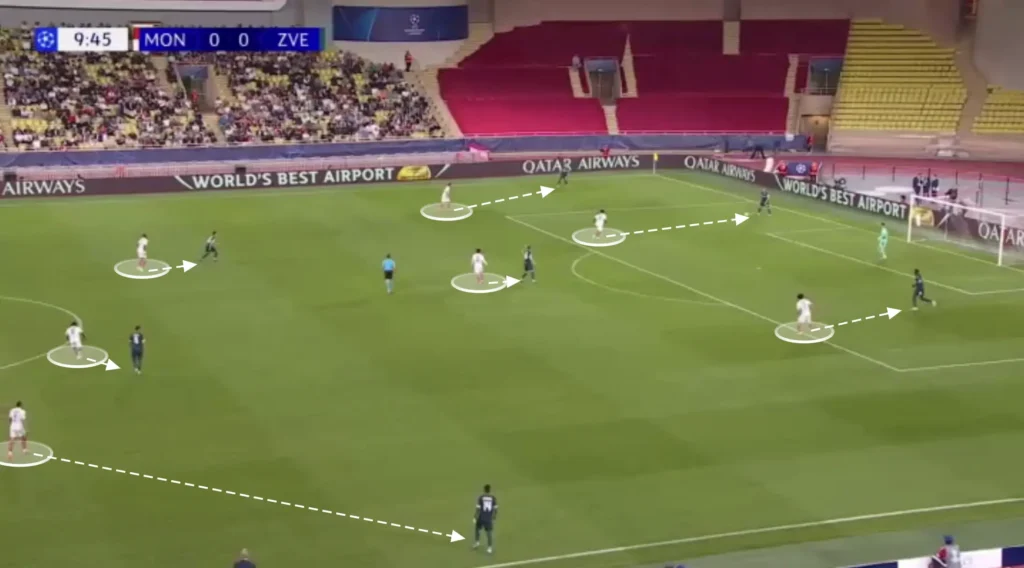
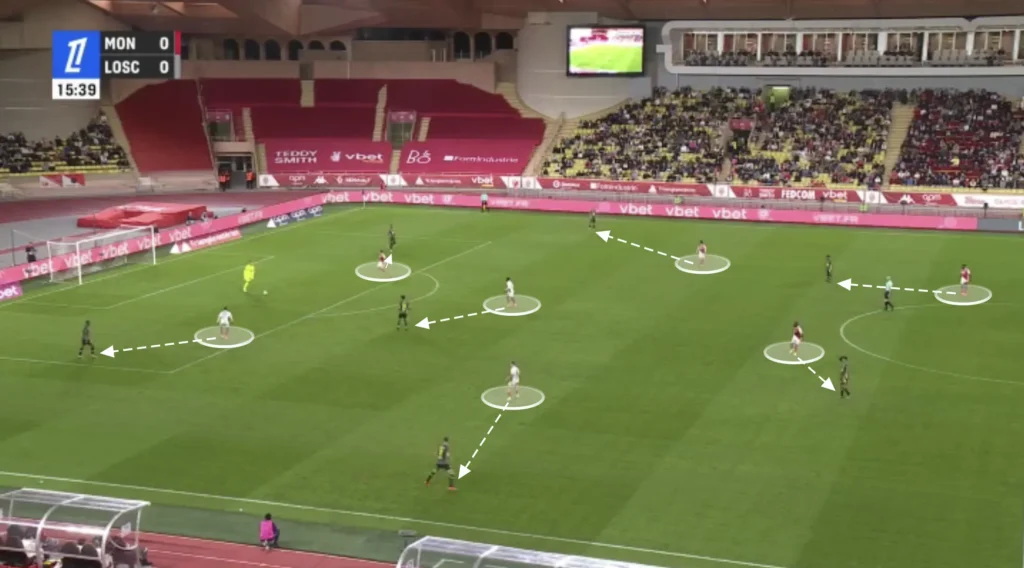
In a man-to-man system, it becomes crucial that the players know when to mark the opponent they are responsible for and when not to. If an opponent, for example, is very far from the ball, the Monaco player marking him does not need to be as close to him. He can instead come in and help create numerical superiorities in the center, decreasing the risk of dangerous 1v1 situations. The Monaco players will always have an opposition player they are responsible for. However, they will never be closer to them than they need to be.
Low Press
When defending lower down the pitch, Hütter usually sets his team up in a 1-4-2-3-1 formation. They look to set up in a mid-block, always trying to close the center and force the opposition out wide.
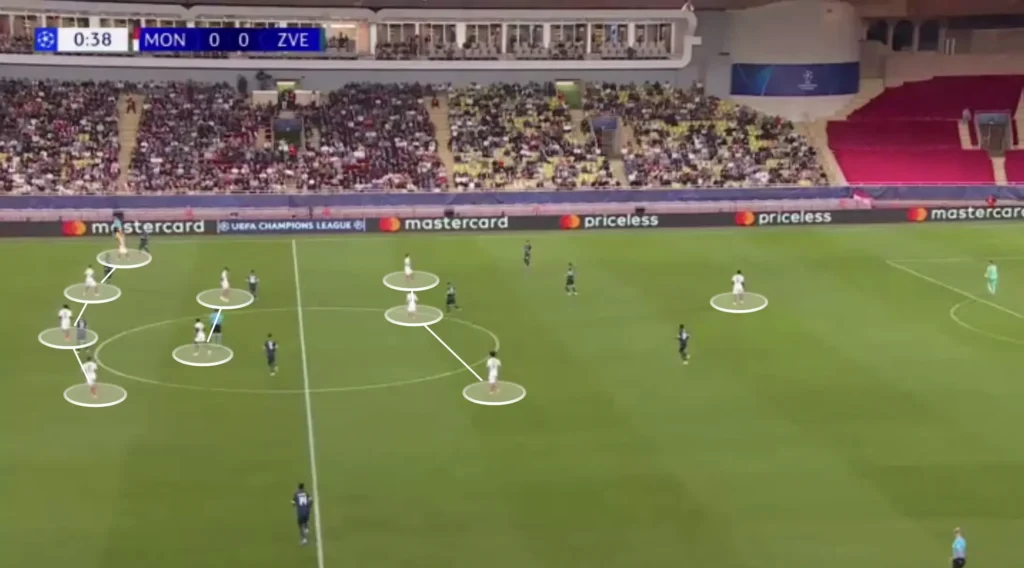
Defending in a 1-4-2-3-1 formation revolves around maintaining a compact and organized structure. The formation features a back four that provides stability, with two holding midfielders shielding the defense. These holding midfielders play a crucial role in breaking up opposition attacks and providing cover for the fullbacks when they advance. The three attacking midfielders work to stop entries for the opposition and cut off passing lanes, while the lone striker applies pressure on the ball. The team aims to stay compact, forcing the opposition to play wide and limiting their ability to penetrate through the center. By maintaining this structure, the 1-4-2-3-1 formation helps to control the middle of the pitch, making it difficult for opponents to create scoring opportunities.
Aggressiveness
Monaco’s defensive strategy under Adi Hütter is characterized by an aggressive approach both high up the pitch and lower down the pitch. The players apply immediate pressure even when retreating into a deeper defensive stance while maintaining a compact shape, closing passing lanes, and forcing opponents to play wide or make risky passes. This aggressive approach enables Monaco to squeeze the pitch when defending. This means constantly pushing the team up as much as possible. Every time the opponent plays a slow, sideways pass or a back pass, Monaco’s first line of pressure pushes up, with the rest of the team following to stay compact. When the next pass comes, they push up even more, forcing the opponent back even more.
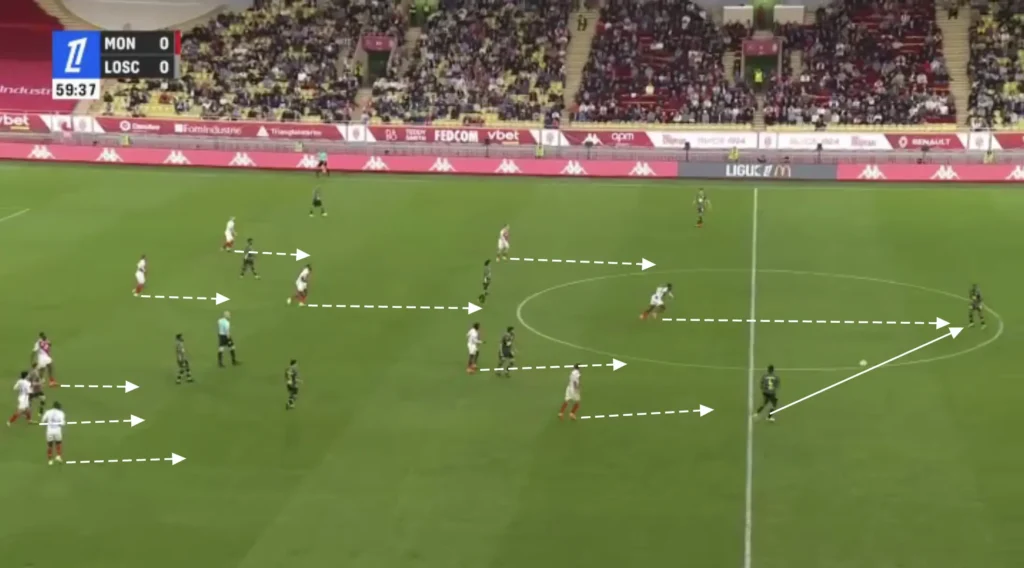
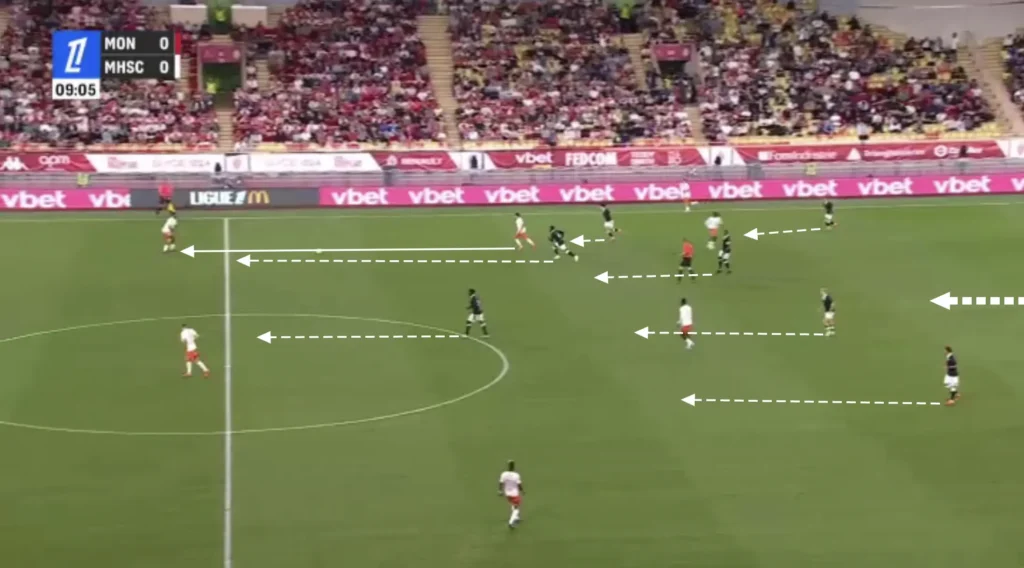
This approach keeps opponents under constant pressure, making it difficult for them to build rhythm or find space between the lines. It also pushes the opponent further away from Monaco’s goal, making it harder to create chances.
Final Thoughts
In conclusion, Adi Hütter’s tactical approach at AS Monaco demonstrates his commitment to high-intensity, dynamic football. His strategies blend pressing, quick transitions, and fluid attacking play, all while maintaining defensive solidity. Hütter’s ability to adapt formations and make tactical tweaks based on the opposition highlights his tactical intelligence.
As Monaco continues to evolve under Hütter, their style of play reflects a balance between aggression and control, which has the potential to bring long-term success. The tactical analysis of his methods gives us a clear view of how Hütter is shaping Monaco into a formidable force in Ligue 1 and beyond.
